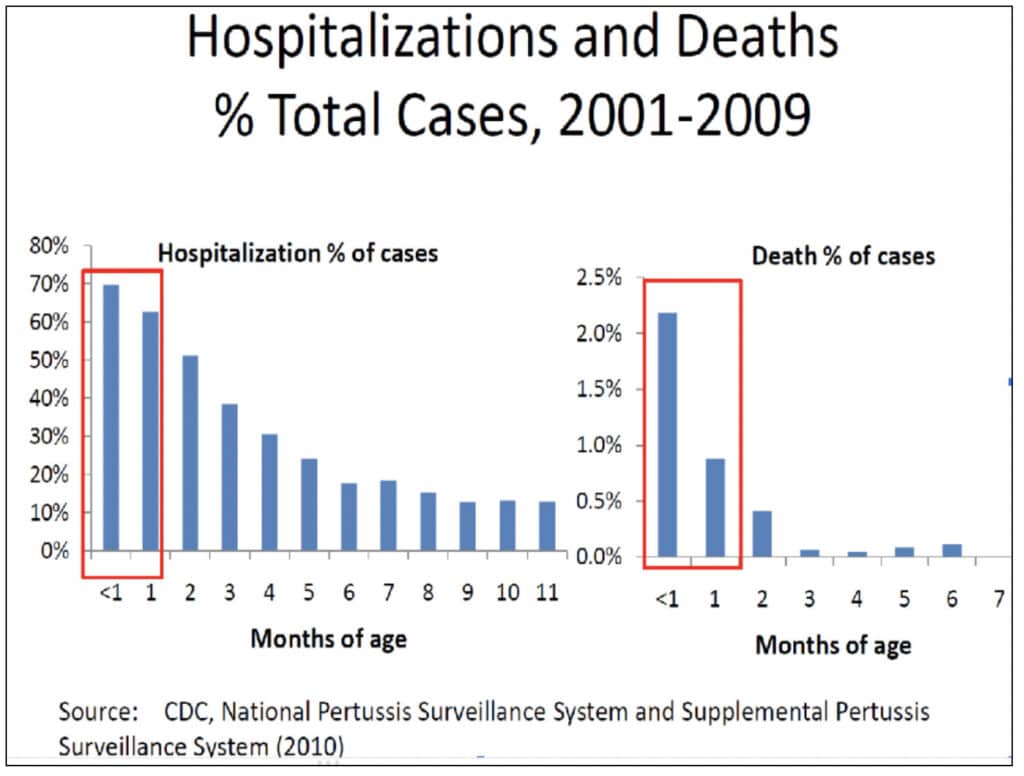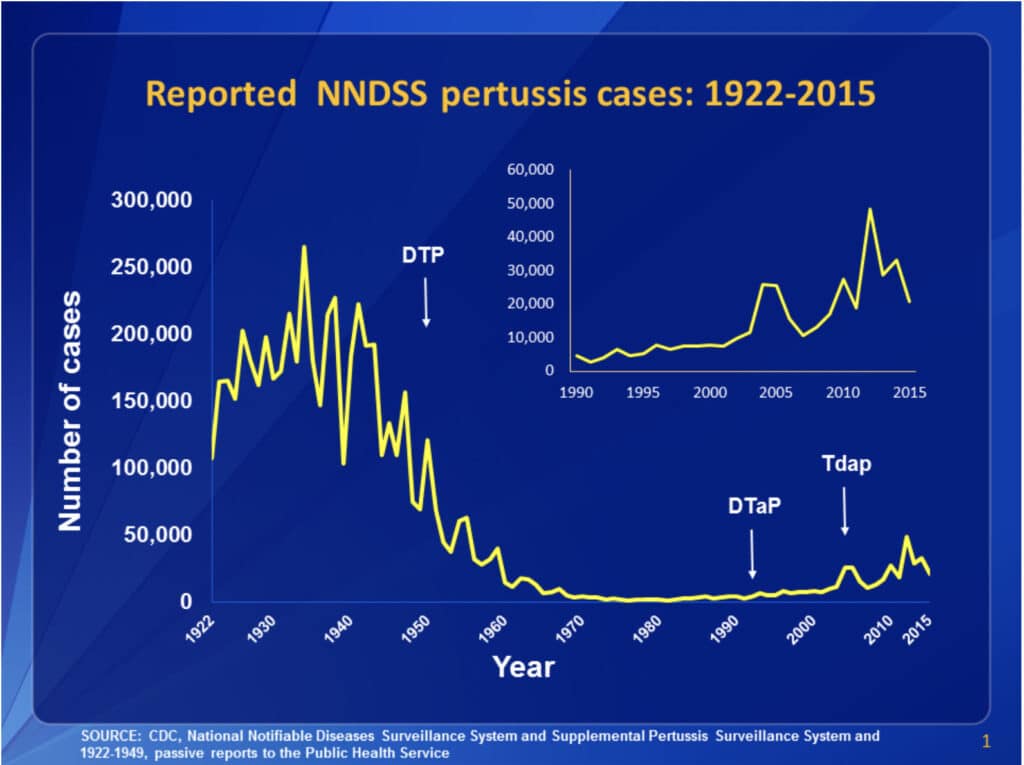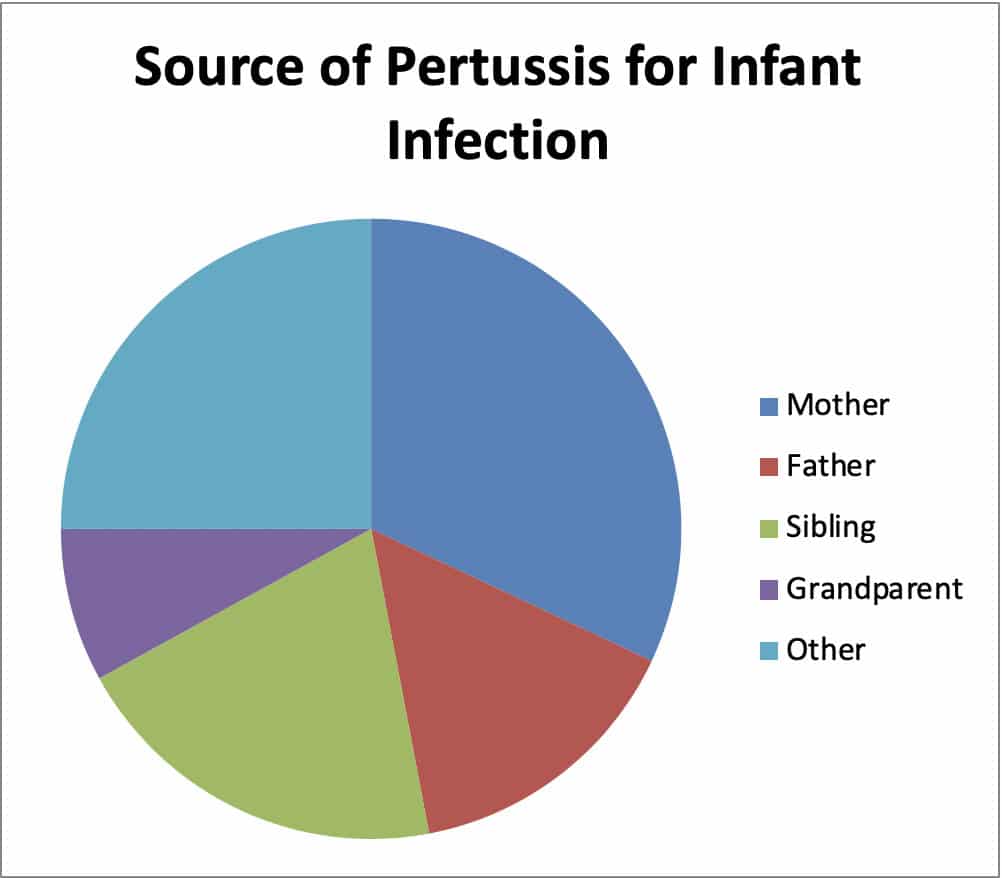Pertussis bacteria causes whooping cough. Pertussis spreads very easily. If 10 non-immune people are exposed to a cough from pertussis, 8 of them will become sick. How long has pertussis been around? People described outbreaks of it way back in the 16th century. Teens and adults can suffer severe effects from a pertussis infection.
This cough persists and can be hacky, and when you cough over and over it is common to throw up afterwards, get a nosebleed, or even to crack a rib. Complications such as pneumonia or seizures may arise. Babies under 12 months old face heightened risks of hospitalization and death.

In 2010 and 2014, I witnessed the devastating pertussis epidemics in California, including the tragic death of a 5-week-old baby in an ICU. Ten babies in California died from pertussis in 2010 and 2 died in 2014. Hundreds of babies were hospitalized. Ever since then, I have strongly recommended vaccination against pertussis as the best way of protecting our little ones.
How does vaccinating against whooping cough during pregnancy help the baby?
Vaccinating mothers aims to boost their pertussis antibodies, providing infants with vital immunity during their vulnerable early months The baby doesn’t start their vaccinations until 2 months old and aren’t fully protected until they have had 4 doses (12-15 months old).
Antibodies from the mom start transmitting to the baby through the placenta as early as 17 weeks, gradually increasing thereafter. By 33 weeks, the baby’s level of antibodies equals the mom’s, and by 40 weeks, the baby has a higher level of antibodies than the mom. This is an awesome way that nature has of protecting our tiny little babies.
Is vaccinating moms new? No, doctors actually vaccinated moms in the 1940s during an outbreak of pertussis to protect their babies. Then the vaccine was routinely recommended for everyone, and pertussis cases dropped quickly.
How vaccinating Children Helps Protect Them From Developing Whooping Cough

The chart indicates an increase in cases over the last 15 years. Why is this? One quick answer is that the anti-vaccine movement has caused less children to be fully vaccinated and protected against the disease. A further answer is that in 1996 we replaced the old pertussis vaccine, called the “whole cell” vaccine, with a new pertussis vaccine called the “acellular” vaccine.
The old vaccine had a higher rate of side effects: 1/3 of children would be really drowsy, 1/300 children would have a fever over 105, and 1/1750 children would have a seizure with a fever. Better science enabled the development of the new vaccine, which contains a few key purified proteins, resulting in much safer administration with fewer incidences of high fever or seizure. This offers much better odds!
But the tradeoff of a safer vaccine is that it does not provide as long-lasting immunity, leading to more cases. However, an extra booster dose can maintain immunity levels. Overall it is a good tradeoff though, as an extra booster dose is able to keep the immunity up.
When an infant gets pertussis who is the source?

The mom accounts for the most common source (32%) of cases in babies. Vaccinating moms offers a beneficial two-for-one deal. The mom is now protected with a nice boost in her immunity and the baby has a lot of mom’s antibodies stored up.
· Pregnant women should get one dose of Tdap vaccine between 27 and 36 weeks’ gestation during each pregnancy. Although anytime during this window is acceptable, the best time to get the vaccine is early during this window.
· Don’t forget to make sure dad has had a booster and that other family members are up to date as well.
Find out more from the Center for Disease Control’s website.

